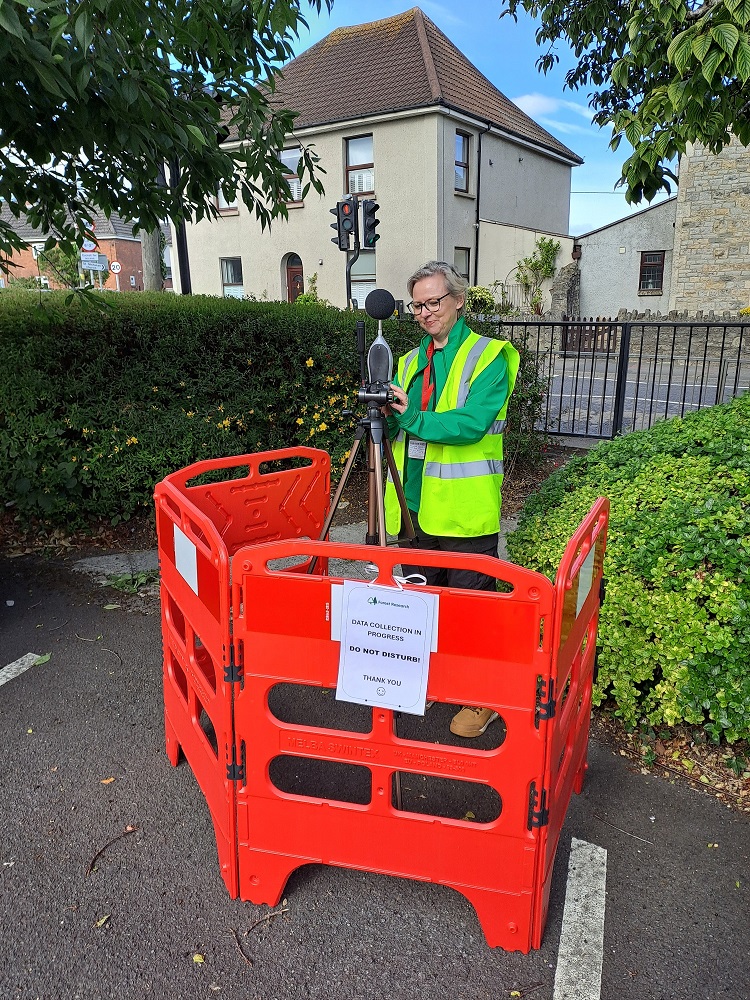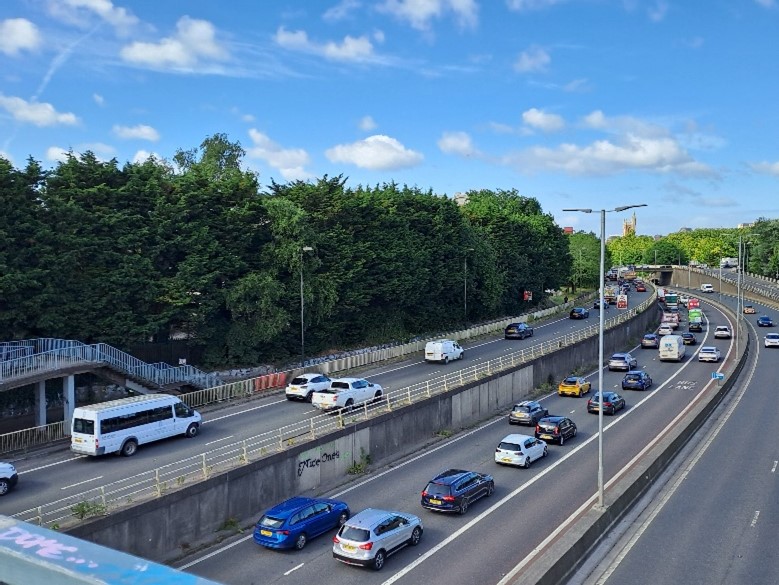Summary
Trees provide a wide range of benefits to urban society (for a summary see Delivery of Ecosystem Services by Urban Forests). The mechanisms by which many of these benefits are delivered are not fully understood, and the steps required to optimise delivery are often poorly defined.
This study will explore the performance of existing tree buffers to reduce urban noise from road and rail traffic. A secondary aim is to investigate the development of a novel method that practitioners can use in the field to test noise reduction effectiveness of a tree buffer.

Noise is defined as sound that is unwanted, that causes a disturbance or disrupts a communication system. It is recognised as a dangerous public health concern, causing long-term conditions ranging from sleep disturbances to cardiovascular issues. Noise affects millions of people globally.
Noise from road and rail sources is a significant concern in many cities and towns. The movement of vehicles and trains generates a variety of sounds, including engine noise, tyre friction, and the clattering of wheels on tracks. These noises can disrupt daily life, affecting sleep, communication, attention, and overall well-being.
Efforts to mitigate this pollution include implementing noise barriers, improving vehicle and rail technology, and urban planning strategies to reduce exposure. Addressing noise pollution is crucial for enhancing future quality of life in urban environments.
Urban trees can play a crucial role in mitigating noise pollution by road and rail traffic. Leaves and trunk absorb, deflect, and scatter the sound waves reducing noise levels. Moss on bark and understory growth further reduce noise.
Research Objectives
The objective of this project is to review literature sources and noise prediction models to determine a vegetation variable which can be used to predict the effectiveness of a tree buffer to reduce noise.

Findings and Recommendations
- A systematic review of 53 empirical field studies and 8 noise prediction models revealed there was no single consistent vegetation variable which can be used to predict the effectiveness of an existing tree buffer to reduce noise.
- Buffer foliage density along the horizonal plane, through the buffer, has potential to indicate noise mitigation of a tree buffer.
- Field work is currently being undertaken (summer 2025) to explore the relationship between buffer foliage density and the performance of a tree buffer to reduce urban noise from road and rail traffic.
- Recommendations for optimal noise reduction by urban tree buffers have been identified and are presented as a Trees and Design in Action Group (TDAG) First Steps guide.

